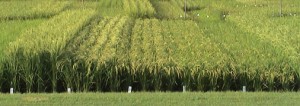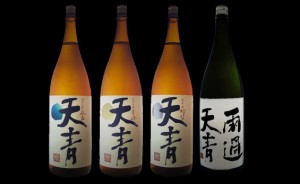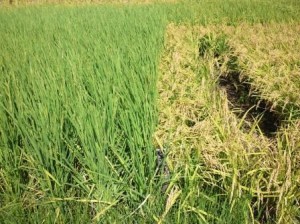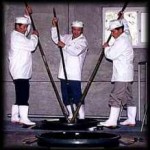 Kanagawa, just below Tokyo, is not exactly a hotbed of hot brewers. Sure, there is good sake from amongst the prefecture’s comparatively scant 16 kura. But it is not a region most sake fans would gravitate toward when it comes to selecting recently hip sake. Then there is Tensei.
Kanagawa, just below Tokyo, is not exactly a hotbed of hot brewers. Sure, there is good sake from amongst the prefecture’s comparatively scant 16 kura. But it is not a region most sake fans would gravitate toward when it comes to selecting recently hip sake. Then there is Tensei.
Tensei is made by Kumazawa Shuzo, a great example of what fresh, new, youthful thinking that is decidedly out of the box can do in turning around one company – and by extension – the industry.
Their story is a long-ish one, and best saved for its own limelight. But in order to inch our way back to the topic here, one of the ways Tensei got back on track was to start a club, a simple pre-sale of a tank of sake.
Those of us that have over the past 20 years supported Tensei will pay a modest sum for three bottles of sake. But we pay in advance, and give the toji total freedom to pull out all the stops. He will use the best rice, yeast and methods he can. And it usually goes very well. But since we have supported him by paying in advance, if it falls short, we have supported him with a lesson learned.
Most years it is great. But last year, i.e. the three bottles I got in June of 2012, were decidedly thinner, and the aromas were laced with what is called ethyl caproate, giving it a bit of apple but underpinned by a bitter layer. OK, fine, I thought. If he does not push the envelope once in a while, he will not get better.
And I drank ‘em. All three. They were fine, if not the rockin’ and interesting stuff I have come to expect from Tensei. I usually drink their junmai ginjo, and that has remained steady and unchanged, so no real problem.
 And then came this year. I had subconsciously lowered my expectations for the club stuff. And when it arrived, I gave it the fair shot, full professional concentration applied. And, boy, did it rock. I mean, outstanding. “Hodo hodo” is the term in Japanese; just enough, but not too much. Just enough umami, maturity, breadth, aroma… I really found it great.
And then came this year. I had subconsciously lowered my expectations for the club stuff. And when it arrived, I gave it the fair shot, full professional concentration applied. And, boy, did it rock. I mean, outstanding. “Hodo hodo” is the term in Japanese; just enough, but not too much. Just enough umami, maturity, breadth, aroma… I really found it great.
And as such wasted no time in emailing the toji to let him know as much. I simply expressed how balanced it was, compared to last year. He responded almost immediately.
Last year,” he began, “based on our initial findings, we expected the rice to dissolve quickly and thoroughly.” Each year, sake brewers begin the season with lower grades, partly to feel out the year’s rice. How did weather affect things? Will it dissolve quickly, leading to full flavors, or out-of-control rough ones if not reined in? Or will it resist dissolving, be hard, which could lead to not enough flavor and an overall tight profile unless coaxed into dissolving via higher moisture content and other methods.
“And so,” he continued, “we treated it as such, keeping the moisture in check so as to eliminate any overbearing or sloppy flavors in the final product. However, when we got to our top daiginjo, the rice did not cooperate. Hence the narrow flavor profile.” And this is why sake brewing is so challenging and interesting. One can have reams of data, but if the fickle micro-organisms and other elements do not feel like going along with that data, the result may go off on a tangent. Textbooks alone will simply not cut it.
“This year, he added, “it behaved as we expected, and everything worked like a charm. Hence the great balance, ideal level of fullness and umami, and as-predicted maturity.”
“Be sure,” he concluded, “to save one for at least six month. The real umami and richness will become even more apparent!” And so I will.
I think that rice is not considered to change much from year to year, when it fact, it does vary hugely. And these variations do have an effect on the final product from year to year. However, so much manhandling of the raw materials takes place after harvest that good craftsmen can and do smooth out these differences in favor of the year-to-year consistence that is, in fact, their goal.
 Interestingly, most brewers cover these year-to-year changes on the fly. The sake in which they are most evident are sake from impossibly tiny brewers (which the brewery that makes Tensei is not) and one-off sake such as this club sake, or contest sake. It is harder to blend differences into oblivion, or tweak them away when working with little else to use in blending, or sake that changes from year to year.
Interestingly, most brewers cover these year-to-year changes on the fly. The sake in which they are most evident are sake from impossibly tiny brewers (which the brewery that makes Tensei is not) and one-off sake such as this club sake, or contest sake. It is harder to blend differences into oblivion, or tweak them away when working with little else to use in blending, or sake that changes from year to year.
Rice is awfully hard to second guess. Yes, it varies. And yes, good brewers can work with that variation. But no, it cannot be done based on rules or textbooks, at least not as well as it can be done via experience and intuition.
~~~~~~~~~~~~~ Sake Professional Course in Las Vegas October 28 to 30~~~~~~~~~~
 The next Sake Professional Course will take place October 28 to 30 at the MGM Grand Hotel in Las Vegas Nevada. Finish off an intense sake education by spending Halloween in Vegas!
The next Sake Professional Course will take place October 28 to 30 at the MGM Grand Hotel in Las Vegas Nevada. Finish off an intense sake education by spending Halloween in Vegas!
More about the seminar, its content and day-to-day schedule, can be found here:
http://www.sake-world.com/html/spclv.html
The Sake Professional Course, with Sake Education Council-recognized Certified Sake Professional certification testing, is by far the most intensive, immersing, comprehensive sake educational program in existence. The three-day seminar leaves “no sake stone unturned.”
The tuition for the course is $825. Feel free to contact me directly at sakeguy@gol.com with any questions about the course, or to make a reservation.




